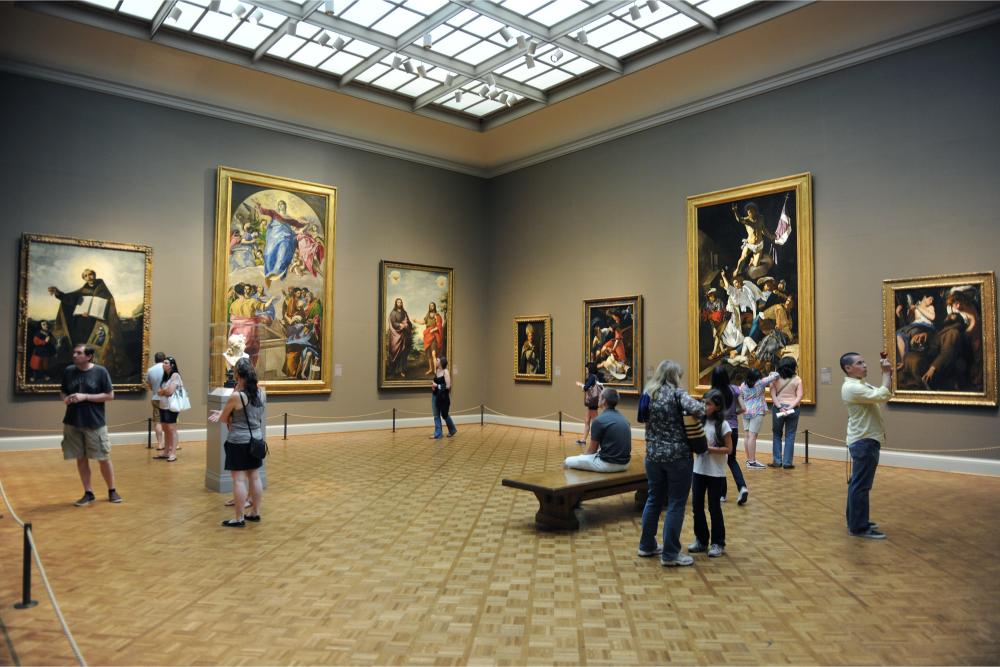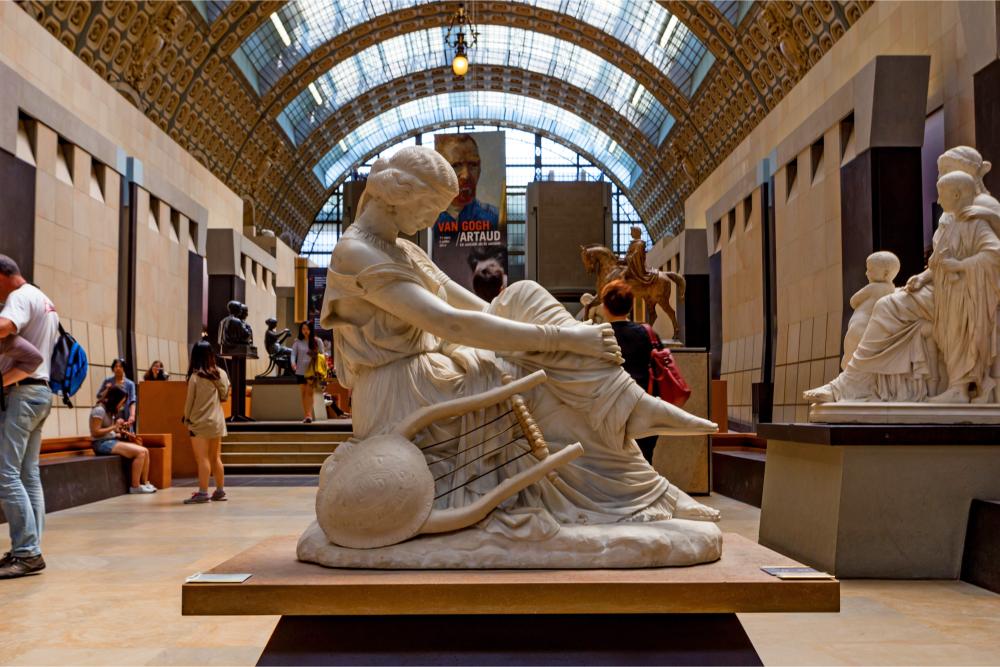BLOG
Home » Turn Silent Exhibits Into Sound: Clear Audio Hearing Loops in Museums and Galleries

Turn Silent Exhibits Into Sound: Clear Audio Hearing Loops in Museums and Galleries
In museums and galleries, visitors come to connect with art, history, and culture. For people with hearing loss, though, these spaces can feel like silent exhibits in more ways than one. Without a clear audio hearing loop system, what should be an engaging experience can be lost to background noise.
A properly installed hearing loop transforms this. By transmitting sound directly to the hearing aid user, the system eliminates distractions and delivers clear audio.
In our experience, exhibitions become accessible, engaging, and inclusive for those with reduced hearing ranges, turning silent exhibits into shared experiences for everyone.
Understanding Hearing Loss: The Silent Barrier
Across the UK, millions of people live with some level of hearing loss. This means that many museum and gallery visitors are hearing aid users or rely on other assistive listening systems.
Standard audio sources are often masked by background noise, including:
- a curator’s voice
- ambient sound
- music
- interactive displays
Without support, cultural spaces risk becoming less welcoming for disabled people and those with reduced hearing ranges.
What Is a Hearing Loop System?
A hearing loop system, also known as an audio induction loop or audio frequency induction loop, is a widely used form of assistive listening technology.
In its simplest form, the system consists of a loop cable fitted around a space, such as a concert hall, museum gallery or exhibit, or reception desk.
When linked to an audio source, the cable produces a magnetic field that carries sound straight to users’ hearing aids, as long as they are set to the telecoil (‘T’) programme.
This direct connection eliminates interference from background noise, providing clear sound quality that is particularly beneficial for hearing aid wearers and individuals with hearing loss.
How Hearing Loops Enhance Museum and Gallery Visits
Induction loops cut through background noise and reverberation, transmitting only the selected audio source. The result is clear sound quality, even in challenging spaces.
From:
- ticket and reception desks
- complete gallery installations
- meeting rooms
- Recorded Music
- Exhibit Narration
These loop systems provide seamless, direct audio for hearing aid wearers and individuals with hearing loss. By providing equal access, hearing loops work to make every visit more inclusive.
How Hearing Aid Users Engage: Using the Telecoil Setting
For hearing aid wearers, connecting to a hearing loop is both discreet and straightforward. Most modern devices include a telecoil setting, allowing them to tune straight into the physical loops installed across public spaces.
Instead of relying on the inbuilt microphones in hearing aids, the assistive listening system delivers crisp, intelligible sound directly to the device. No alternative technology or additional equipment is required; just the final piece that makes culture fully accessible to people with hearing loss.
Benefits Beyond Audio: Accessibility, Inclusion, and Confidence
The value of hearing loops extends well beyond improved sound quality. Hearing aid users often report less listening fatigue and greater participation when using loop systems, especially during tours, talks, or live events.
This support for equal access allows disabled people and people with hearing loss to enjoy:
- performances
- guided tours
- discussions
Case Studies: UK Museums and Galleries Leading the Way
Across the UK, including Northern Ireland, many museums and galleries are adopting loop systems. Three notable institutions highlight best practice in hearing loop accessibility:
- British Museum, London – Hearing loops are installed at ticket and information desks as well as within audio exhibits. Visitors also benefit from British Sign Language tours and accessible transcripts, creating a fully inclusive cultural experience for people with hearing loss and those who wear hearing aids.
- Science Museum, London – The museum has fitted hearing loops at reception desks, in the lecture theatre, and across gallery audio sources. These are supported by BSL interpretation and subtitles for gallery films, embedding assistive listening into the everyday experience for individuals who are hard of hearing.
- Titanic Belfast, Northern Ireland – Hearing loop systems are available in audio areas throughout the museum. Multimedia guides, interpreters, and exhibition headsets compatible with users’ hearing aids provide a strong model for accessibility and inclusion within Northern Ireland’s museum sector.
By incorporating assistive listening into the standard visitor experience, alongside accessible tours and transcripts, these institutions underscore the importance of hearing loop installation. The outcome is clear: greater inclusion, improved guest satisfaction, and a more welcoming environment for individuals with hearing loss and those who use hearing aids.
Designing and Installing Effective Hearing Loop Systems
Successful loop installation begins with understanding coverage needs. Should the induction loop serve an entire gallery, a single exhibit, or a specific reception desk?
Larger, permanent systems often rely on fixed loop cables, while portable loop systems help change displays or flexible meeting rooms and spaces.
Technical planning also matters. Decisions about loop placement, connection to the sound source, and regular maintenance all contribute to ensuring reliable performance and consistent sound quality for hearing aid users.
Promoting Awareness: Visibility, Signage, and Staff Training
For hearing loop systems to be truly effective, visitors must be aware that they’re available. Clear signage highlighting the presence of induction loops is vital, whether at entrances, reception desks, or throughout exhibition spaces.
Equally important is staff knowledge. Team members should be confident in:
- supporting hearing aid wearers
- helping them activate the telecoil setting
- ensuring the chosen audio source is connected
In addition, updating marketing materials and websites to showcase assistive listening options helps set expectations before arrival.
Ultimately, visibility and awareness are just as crucial as the loop installation itself for enhancing accessibility in museums and galleries.
Final Thoughts: Making Silent Exhibits Speak to All
Exhibits should never mean silent experiences for those with hearing loss. By installing clear audio hearing loop systems in museums and galleries, cultural venues are setting new standards for accessibility and inclusion.
For hearing aid users and hearing aid wearers, the right loop system transforms silence into sound, cutting through background noise and providing a direct connection to the sound source. With thoughtful loop installation, every visitor can share in moments that are equally rich, meaningful, and open to all.
If you’re ready to enhance accessibility and provide equal access with a professional hearing loop system, contact us today at 01142 357717. Our experts will guide you through the best assistive listening solutions tailored to your space, ensuring clear audio and inclusion for all people with hearing loss.
Categories
- Assisted Living (3)
- Case Studies (1)
- Commercial Hearing Loops (24)
- Compliance (2)
- Hearing Loops in the Home (7)
- Hearing Loss (6)
- Information Centre (31)
- Installation & Commissioning (6)
- Portable Hearing Loops (17)
- Service & Maintenance (5)
- Uncategorized (1)
Recent Posts
- Funding for Hearing Loops: How Access to Work Can Help You Succeed
- A Guide for Retirees Improving Your Listening Experience with Hearing Loops
- Turn Silent Exhibits Into Sound: Clear Audio Hearing Loops in Museums and Galleries
- Google Maps Hearing Loops: How to List Your Accessible Venue Easily
- How Retailers Boost Revenue with a Counter Hearing Loop System

